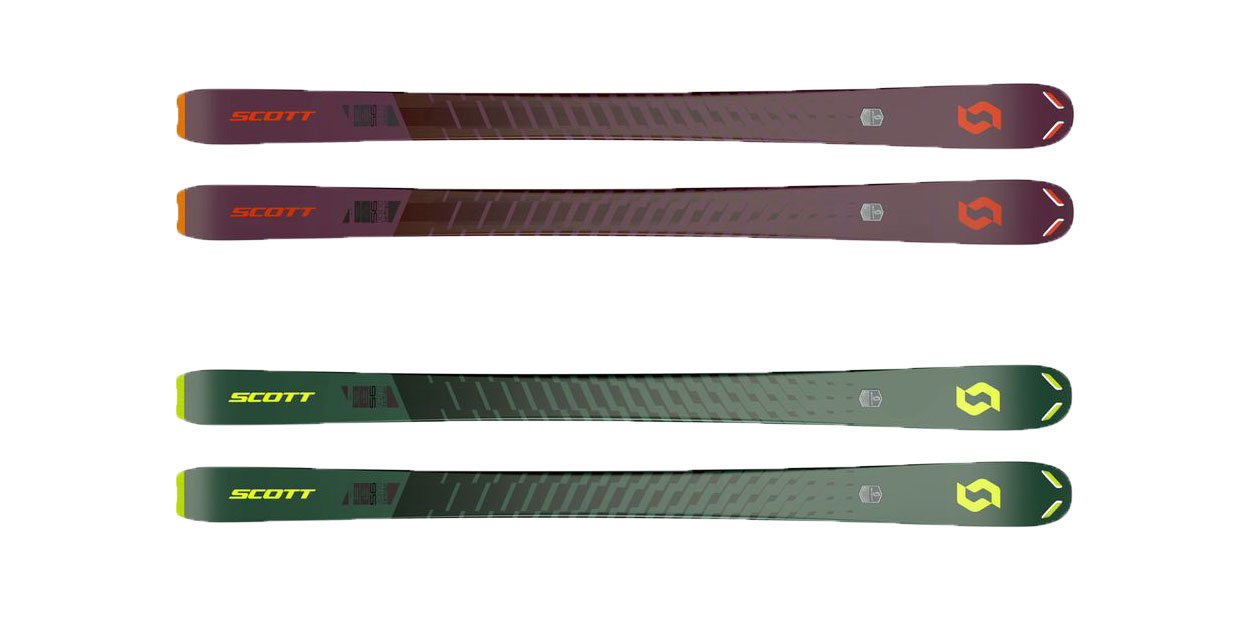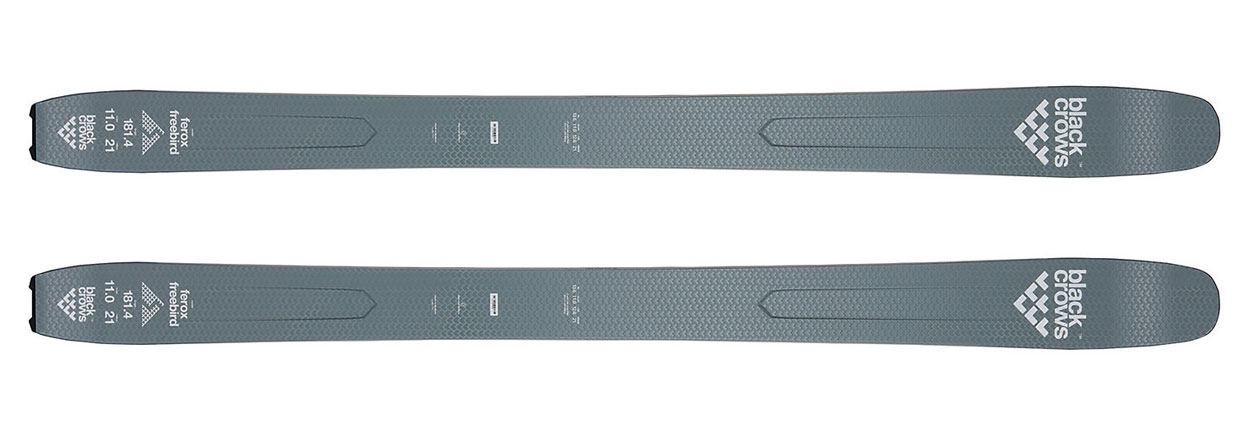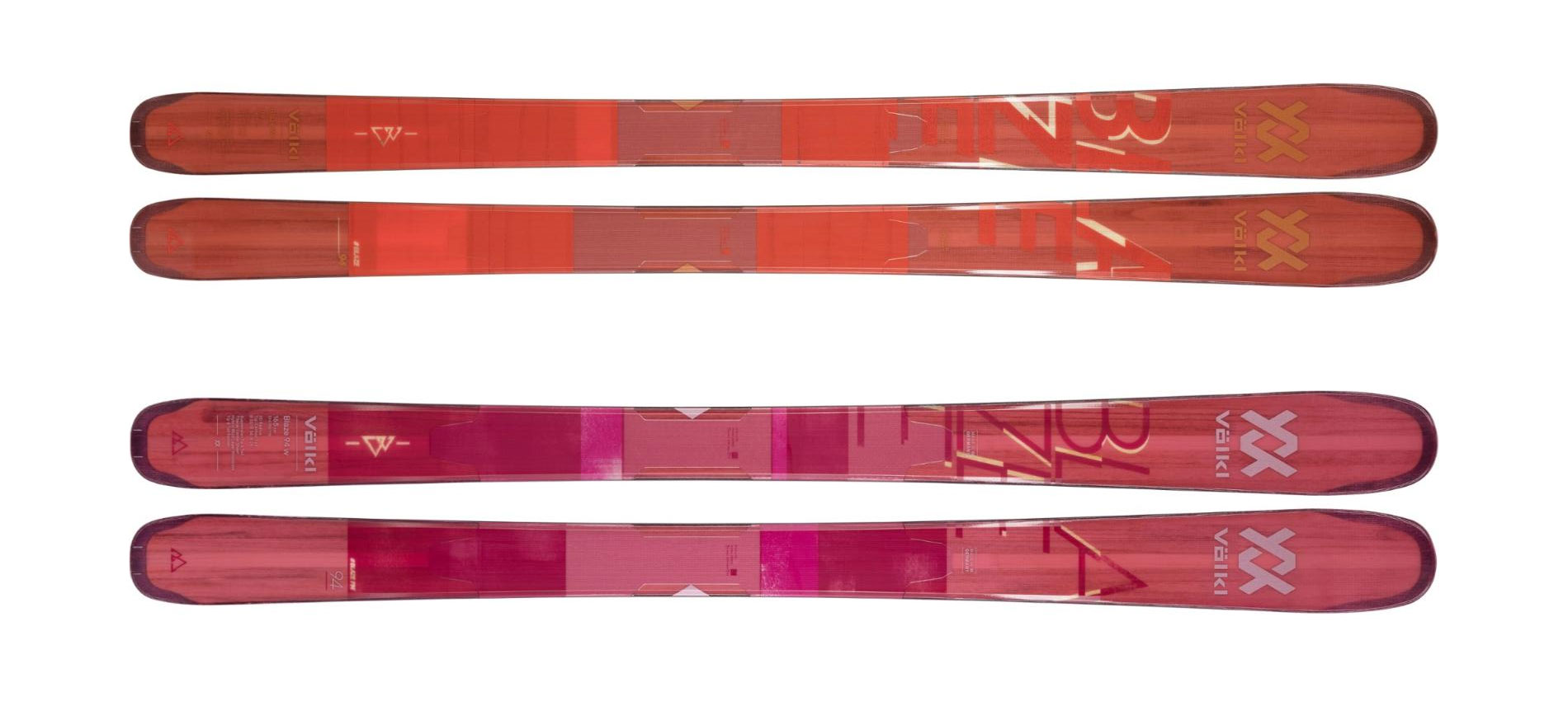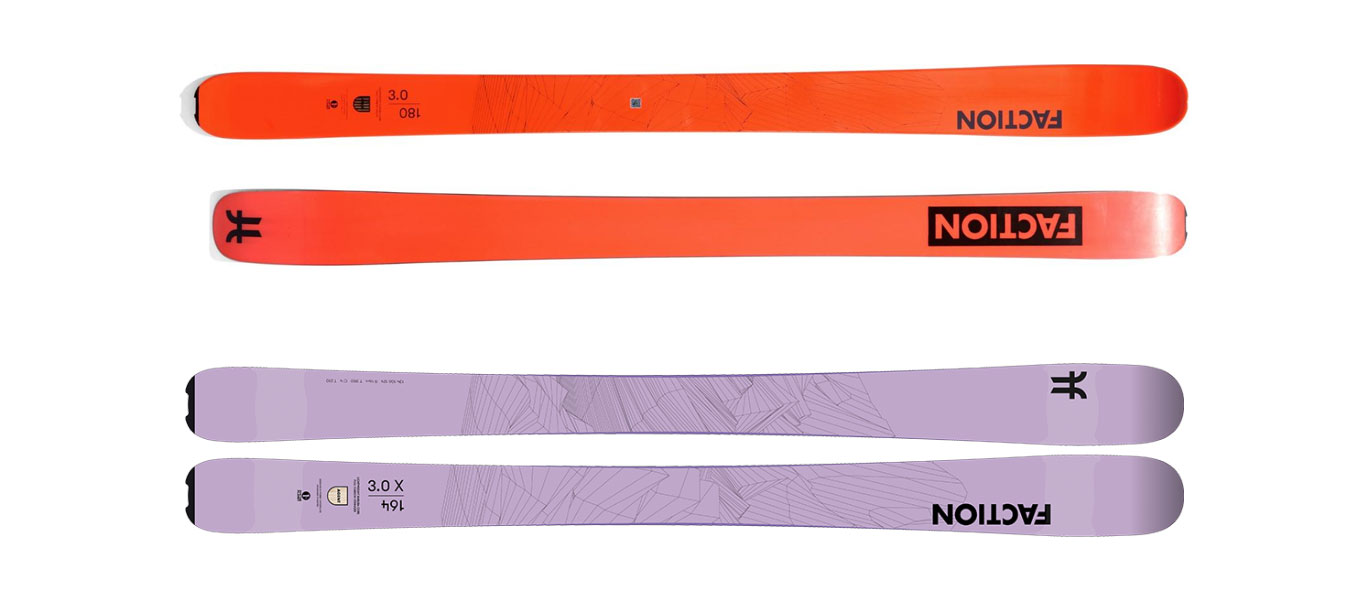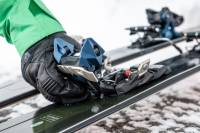Hiking for turns is one of winter’s great pleasures. It combines exercise and adventure with a dose of exhilaration for good measure. And you’ll want the best backcountry skis to fit your needs. These are some of our favorites.
Backcountry skiing gives you the best of the snowsports worlds. On the uphill, not only will you get in your RDA of steps, but you’ll take in stunning mountain views and fill your lungs with fresh air. On the downhill, you’re awarded with low-traffic or no-traffic carving and the thrill of being human-powered, with an above-average chance of finding fresh snow.
The best backcountry skis are the ones that match your backcountry ski priorities and your style. If you want to speed to the top, buy a ski that’s light. If you’re all about the downhill, prepare to pay a weight penalty on the ascent for freeride performance when you’re carving down the mountain.
As with any ski, buy a length that matches your ability and a width that matches the snow conditions. Hone in on what fits and what matters, then visit your local ski shop, educate yourself on backcountry safety, and get ready for some serious fun.
We tested nearly all the new-for-2021 skis on open slopes and our favorite tree runs to bring you this roundup of the best backcountry skis of 2021.
The Best Backcountry Skis of 2021
An Ultralight Performer That Can Still Handle Big Terrain: Scott Superguide 95 — Men’s & Women’s
Across the board, brands are trying to make their skis more versatile. Scott is leading the charge with its freeski-inspired Superguide 95 ($800), which is designed to help skiers conquer new summits and have more fun and control on descents.
The core of a ski is its motor. And in the newest iteration of the Superguide, Scott added 4% beech to make these skis lively. Scott swapped carbon stringers they used to lay out at a 45-degree angle for straight carbon stringers, which made the ski more responsive than previous iterations.
They added thicker, concave, elliptical sidewalls to help the ski hold better in mixed conditions. Longer tip and tail sidecut with less sidecut underfoot gave the ski a transition zone for smoother carving. More front of ski taper made it easier to enter a turn and helped this ski handle better in powder.
The Superguide 95 has Scott’s 3D touring sidecut for versatility and maneuverability. Full-length sidewalls gave the ski torsional stability, and the ski’s steel edges held when I was sideslipping down an extremely steep couloir that was simultaneously sugary and punchy before skiing out of the Vallee Blanche on hardpack and ice littered with rocks.
Despite its featherlight weight, the ski was poppy and lively thanks to its paulownia plus beechwood core and carbon stringers.

The Superguide’s 95mm waist was quick on the uphill, nimble, and reliable on the down. The rockered tip had solid float and forgiveness in fresh snow. Camber underfoot let me power the ski’s edges when things got firm. And the medium turn radius balanced nimble control with confidence-inspiring stability.
The Superguide 95 is shockingly light. If I hadn’t tested it off piste in the Italian and French alps in variable, breakable crust, ice, and chunder in couloirs where if you fall you die, I’m not sure I would recommend it so enthusiastically.
But after 2 days of skiing extremely challenging terrain in terrible conditions, I can report that though these skis are absurdly light, they held an edge, they didn’t get tossed around, and they never distracted me from the task at hand. Scott makes compatible skins that clip into cutouts in the ski’s tip, and which come pre-trimmed.
- Length: 162cm, 170cm, 178cm, 184cm
- Dimensions: [162cm] 126 / 93 / 111mm, [170cm] 128 / 94 / 113mm, [178cm] 130 / 95 / 115mm, [184cm] 132 / 96 / 117mm
- Turn radius: [162cm] 19m, [170cm] 20m, [178cm] 21m, [184cm] 22m
- Profile: Pro-Tip Rocker 320
- Construction: Sandwich sidewall semi-elliptic
- Core: Paulownia, beech
Pros:
- Insanely light
- Tip cutouts for dedicated clip-on skins
Cons:
- Chattery on hardpack
Check Price at BackcountryCheck Price at Scott Sports
A Fat Ski for the Deepest Powder: Atomic Backland 117
For many years, Atomic’s Backland 105 has been a staple in my quiver. It’s a ski that makes everyday conditions extremely fun. Now the Backland 117 ($800), a powder day ski that’s still fun to ski, even when you get skunked, joins the family and it’s just as awesome.
The Backland 117 is a chameleon. On the uphill, it never felt heavy, and on the downhill, it punched above its weight class. Rocker in the tip and tail made playing in powder about as good as it can be, and underfoot camber gave me grip when the conditions weren’t as creamy as I’d hoped, or when my backcountry day ended at the resort.
The Backland 117 has a light and responsive beech and poplar wood core reinforced with a carbon backbone to stiffen up the ski and give it the structure to ski aggressively. Full sidewalls added durability and gave the ski torsional rigidity, which I appreciated when I wanted to carve turns, not slarve them.
Atomic extends the sidewall material into the tip of the ski, adding 10% more surface area for even more float. I felt the benefits both when I was in deep fluff and when I was busting through refrozen avalanche debris.

This isn’t the first year the Backland 117 has been in Atomic’s line. But this year’s ski is lighter and more playful than previous iterations. It’s on the lower end of the price spectrum for a ski of these dimensions. And when the snow was deep, surfing these boards down a powdery slope was about as good as it gets.
- Length: 177cm, 184cm, 191cm
- Dimensions: [177cm] 139.5 / 117 / 128.5mm [184cm] 140.5 / 117 / 129.5mm [191cm] 141.5 / 117 / 130.5mm
- Turn radius: [177cm] 18m [184cm] 19m [191cm] 20m
- Profile: Rocker tip and tail, camber underfoot
- Construction: Sandwich sidewalls
- Core: Beech, poplar
Pros:
- Affordable
- Light
- Versatile for such a wide ski
Cons:
- The fat waist makes it a quiver ski
Check Price at AmazonCheck Price at Backcountry
A One-Ski Quiver: Black Crows Ferox 110
With the boom in hybrid bindings in the past few years, I am constantly searching for the single-ski quiver, the one setup that can handle all conditions. The light and fat Ferox 110 ($1,020) comes darn close to being that ski.
The Ferox is agile and lively. Though it’s designed for backcountry, it can handle resort skiing. Medium classic camber underfoot translates to an energetic feel that made it easy to initiate turns. It also seemed to erase irregularities in the snow — I just glided over them — whether the surface was powder or firm.
For a ski with such a wide waist, the Ferox had an exceptional float and edge-to-edge control. As with most skis, the secret lies inside. The core of the Ferox has paulownia stringers and Isocore, polyurethane “mousse” that’s both durable and dimensionally stable.
In this ski, paulownia and Isocore are reinforced with continuous glass fibers. The ski’s 3D shape, which is formed in an “H,” eliminates material and weight from the body of the ski. Then, Black Crows added carbon fiber laminates to give this ski torsional rigidity and consistent flex that almost made it feel like a frontside ski.

The ski has a double rocker for maneuverability. Though it has a claimed medium turn radius, when I wanted to I could turn it on a dime. And whether I was casually cruising or rocketing with an open, the Ferox 110 was tenaciously stable.
- Length: 170cm, 176cm, 181cm, 186cm
- Dimensions: [170cm] 135 / 110 / 126mm [176cm] 135 / 110 / 126mm [181cm] 136 / 110 / 126mm [186cm] 137 / 110 / 127mm
- Turn radius: 21m
- Profile: Rocker / camber / rocker
- Construction: Half-cap
- Core: Poplar, paulownia, isocore
Pros:
- Super-versatile for such a light ski
Cons:
Check Price at AmazonCheck Price at Moosejaw
A Single Ski for Frontside, Sidecountry, and Backcountry: Volkl Blaze 94 — Men’s & Women’s
The freeride-focused Blaze 94 ($550) is a playful and easy-to-operate ski. The lightweight Blaze crushes a wide range of off-piste conditions, but it can hold its own on resort terrain too.
Beech blends with poplar in the core of this ski. It’s a durable combination, with hardwood under the binding reinforced with a 0.3mm-thick Titanal binding platform underfoot, and softer lighter woods in the tip and tail. The metal plate not only guaranteed I wouldn’t rip out my binding screws when I got aggro.
But it gave it an extra dose of carve-ability when I powered into a turn. Volkl didn’t use Titanal in the tip and tail, which kept the ski lively, light, and quick to react. But they did add their signature 3D radius sidecut, which continuously felt like it was working with me not against me regardless of how I asked it to carve.

Similar to Atomic’s HRZN Tech tip, Volkl used an elastic rubbery material in the tip and tail for shock absorbency and to combat chatter. It acted like a bumper, preventing rattle in hard conditions or end-of-day groomer runs. It also helped this ski float in soft snow.
The end result was an easy-skiing board that felt almost intuitive to operate. Mount it up with a Shift or a Market Duke PT binding, and it’s a ski that can go everywhere on the mountain, whether you’re skiing there or taking a lift. Pair it with Volkl skins, and you’ll save yourself a headache. Volkl sells pre-cut skins by model and length.
- Length: 165cm, 172cm, 179cm, 186cm
- Dimensions: 134 / 94 / 116mm
- Turn radius: [165cm] 25 / 14 / 33m, [172cm] 27 / 15 / 37m, [179cm] 31 / 17 / 38m, [186cm] 39 / 19 / 44m
- Profile: Tip and tail rocker
- Construction: Full sidewall
- Core: Hybrid multilayer (poplar, beech)
Pros:
- Great ski for backcountry and resort skiing
Cons:
- Not exceptional in hard snow
Check Price at REICheck Price at Amazon
A Powder Ski That Holds on Hardpack: Blizzard Zero G 105
Great for long days skinning and ski mountaineering, this purpose-built touring ski ($800) incorporates the same innovative and advanced construction techniques Blizzard uses in all its skis, slimmed and trimmed down into a backcountry-specific model.
Blizzard’s Carbon Flipcore technology sandwiches a unidirectional carbon frame into the core of the ski for responsiveness and bite that’s sensitive and energetic. The frame is mated to an ultralight paulownia wood core to hold the frame in place. The frame allows the ski to flex evenly, while also giving it the torsional rigidity to be carve-y and fun.
Blizzard also layers bidirectional carbon fiber edge to edge in the binding mount zone to give the ski strength, torsional stability, and the teeth to bite into hardpacked snow.

I’ve rarely experienced the stability, edge grip, and resulting control that this ski brings to any run. The ski was light, powerful, and always playful — DNA it gets from rocker in its tip and tail.
Often, I’ll pass on the lightest ski when I head into the Vermont woods because I just don’t know what conditions I’ll find. And when I hike up, I want the joy of the descent to outweigh the pain of the climb. These skis delivered every time.
- Length: 164cm, 172cm, 180cm, 188cm
- Dimensions: [172cm] 132 / 105 / 118mm [180cm] 133 / 105 / 119mm [188cm] 134 / 105 / 120mm
- Turn radius: [172cm] 20m [180cm] 23m [188cm] 24m
- Profile: Rocker tip and tail, camber underfoot
- Construction: Half-cap [underfoot] ABS sidewalls
- Core: Paulownia
Pros:
- The proprietary skin is slick
Cons:
- Too light to pair perfectly with a hybrid binding
Check Price at BackcountryCheck Price at Amazon
A Speedy Plank for Skimo Racers: Dynafit Blacklight 80
A narrow, performance-oriented, weight-conscious ski made specifically for speed demon ski tourers, the paulownia core, unidirectional carbon-reinforced, ultralight Blacklight 80 ($650) had exceptional uphill grip and better float descending in soft snow than other skis in its class.
Slight rocker in the tip and tail, which is uncommon for this category of skis, made turning easier. The 2021 version has more rigidity for better grip, at least partially thanks to full ABS sidewalls. A full-carbon top layer gave the Blacklight both strength and durability at the lowest possible weight.
Light weight in a skimo ski is particularly important. Weight on a skier’s feet is effectively heavier than weight anywhere else because it’s swing weight. Skin uphill, and you’re continuously moving your ski weight forward from a full stop. Lower total weight reduces swing weight without compromising stability.
If flashing ascents is on your to-do list, add this ski to your quiver. Dynafit says it’s for “fast, passionate ski tourers who seek a lightweight, easy-handling touring ski for technically demanding terrain.”
In building it, Dynafit tried to cut weight everywhere they could to help skiers move faster. One of those places was not the ski proper but the skin. By creating an insert in the ski for a dedicated skin, Dynafit shaved grams and also made transition times quicker for skimo racers. The new ski inserts into the ski and anchors with a small pin.
Tip and tail rocker and sidecut are adapted for each ski size, which seems obvious but isn’t standard practice in skimo skis. That kept the effective edge length proportional and gave this ski consistent performance across sizes.
The Blacklight’s base comes with a special race grind that was noticeably fast.
- Length: 151cm, 158cm, 165cm, 172cm, 178cm
- Dimensions: [151cm] 113 / 77 / 97mm, [158cm] 114 / 78 / 98mm, [165cm] 115 / 79 / 99mm, [172cm] 116 / 80 / 100mm, [178cm] 117 / 81 / 101mm
- Turn radius: [151cm] 14.5m, [158cm] 15.5m, [165cm] 17m, [172cm] 18.5m, [178cm] 20m
- Profile: Tip and tail rocker
- Construction: 3D Sidewall Cap
- Core: Paulownia speed core
Pros:
- Ultralight and ultra-fast for skimo racers
Cons:
- Super-specific skimo race ski not a lot of fun on the downhills
Check Price at AmazonCheck Price at Backcountry
A Powder Surfer That Can Also Carve: DPS Pagoda Tour 112 RP
Backcountry skiers are eternal optimists. I always pick my skis for the best possible conditions I might encounter, even if the reality is somewhat less glorious. When I’m ready for blower powder, and the conditions are somewhat less ideal after the first dozen turns, the DPS Pagoda Tour RP ($1,299) has my back.
The successor to DPS Wailer 112, this short-turn-radius ski let me lay down a zipper line of perfectly spaced creamy turns when the day was deep. But when that deep snow turned to variable crust or some form of snow that was refrozen and hadn’t softened up yet, the ski was damp, predictable, and stable.
Performance in this partial twin tip comes from DPS’s unique core construction. Ash and paulownia stringers pair with aerospace-grade foam core to make the ski light for climbing, surfy in powder, and damp when I hit the chunky stuff. The wood and foam are overlaid with a prepreg carbon laminate infused with DPS’s proprietary cocktail of damping additives.

It was surfy without feeling like a banana, and when I ran out of soft snow, it carved above its weight class. Snow didn’t accumulate on the topsheet and weigh me down thanks to DPS’s textured polyamide topsheet. And to make sure the ski always feels freshly tuned, the Pagoda Tour 112 RP comes pre-treated with DPS Phantom 2.0 which bonds to the base of the ski for an always freshly waxed feel.
- Length: 158cm, 168cm, 178cm, 184cm
- Dimensions: [158cm] 138 / 112 / 122mm, [168cm] 139 / 112 / 124mm, [178cm] 140 / 112 / 125mm, [184cm] 140 / 112 / 127mm
- Turn radius: 15m
- Profile: Rocker/camber/rocker
- Construction: Pagoda (full sidewall)
- Core: Paulownia, ash, aerospace-grade foam
- Weight: [178cm, pair] 6 lbs. 11.2 oz.
Pros:
- One of the smoothest powder skis made
- Phantom treated
Cons:
- Too wide for a one-ski quiver
Check Price at REICheck Price at Amazon
A Soft Snow Freeride Carver: Faction Agent 3.0 & 3.0X 106
The freeride brand’s first caruba wood core ski, the strong but approachable Agent 3.0 ($749) was playful and maneuverable with a versatile waist width that made it a great choice for a skier who ventures out primarily in soft snow.
To build this ski, Faction wove strips of unidirectional carbon into fiberglass above and below the Agent 3.0’s wood core to add strength and stiffness with almost no weight penalty. Then they added a Titanal binding plate underfoot to reinforce the light core, to secure the binding, and to give the underfoot zone the teeth for carving on hardpack.
The Agent 3.0 was built with Faction’s elliptical sidecut. It has a longer turn radius underfoot, but a shorter turn radius in the tip and tail. That made it especially easy to initiate turns and to be quick edge-to-edge in tight trees, while the flat tail let me carve across the face of a slope.

Faction calls the Agent 3.0’s tail flat, but it has some rocker. The rocker insured the ski didn’t hook up in deeper snow. And when I needed to slarve my turn before I jumped into the next carve, I was in control. In deep snow, the ski had a surfy feel. Despite the zonal sidecut, a tapered tip shifts the widest part of the ski closer to the ski center which made it floaty and smooth even in less than perfect conditions.
Extra-thick edges absorbed impact, and a wraparound topsheet that extends to the ski’s edges in the tip and tail protected the Agent 3.0 from chips, nicks, and damage. Together they give these skis a longer life expectancy.
Many brands soften up their women’s skis and build them for lighter weight riders. Faction offers a women’s Agent 3.0 called the 3.0X, but the only difference is the topsheet color.
- Length: 172cm, 180cm, 188cm
- Dimensions: 134 / 106 / 124mm
- Turn radius: [180cm] 21m
- Profile: Early rise, camber underfoot
- Construction: Half cap
- Core: Caruba
Pros:
- Freeride feel
- Flat tail for powerful carving
- Durable
Cons:
- Best for soft snow
- Not as versatile as some other skis
Check Men’s Price at REICheck Women’s Price at evo
How to Buy Skis
Alex Quitiquit, senior hardgoods buyer at Backcountry.com, said, “The first thing a skier needs to do is determine what type of skiing you want to do with the skis you’re buying, which will help you wade through confusing attributes like rocker and turn radius, and find a pair to meet your needs.”
Backcountry skiers must decide if their biggest priority is the uphill, the downhill, or both equally. A lighter ski will be easier and faster when you’re skinning up a mountain, but it may not be as stable or fun on the descent. A heavy ski will glide through variable snow and grip on the ice better, but it will likely be heavier and slower on the uphill.
Ski Length
Once you know what’s important to you, figure out your ski length. The right ski length depends on your height, weight, and ability.
A 5’10″ 180-pound male should consider a length around 180 cm for a resort-focused freeride powder ski. If you’re a hard-charging expert, you may opt for a ski closer to 190 cm. If you’re a beginner/intermediate, you may opt for a ski in the 170cm range.
For a newer skier, shorter skis are more fun and manageable because they’re more nimble and easier to turn. Some backcountry tree skiers prefer shorter skis because they’re more nimble turning.

Consider Ski Waist Width Next
A ski for arcing groomer turns will have a waist between 80-90mm. So most backcountry skiers opt for something wider and more versatile. Skis with 90-105mm waist width will have good float in soft snow and they’re best for skiers who will spend half their time on more consolidated snow and half their time in soft snow. Choose a ski with a 105-120mm waist for powder.
If your standard conditions are 6-12 inches of fresh powder, alpine fat skis will give you maximum float. Opt for a waist above 120, and you’re firmly into the big-mountain powder category for special days when you’ll be skiing 2 feet or more of fresh snow. “Over 120 waist is a dream-day quiver ski,” said Quitiquit. “Don’t expect to take it out all the time.”
Turn Radius
Then, it’s time to consider a ski’s other characteristics and to consider how those match your preferences. A ski’s turn radius is based on the shape and length of the ski.
If you like to carve super-G turns, pick a turn radius over 20. If you like to make tight turns, look for a turn radius of 15 or below. A shorter turn radius will be easier to ski if you’re a beginner or intermediate.
Quitiquit says that the sweet spot is 17-19.
Rocker and Camber
They describe the profile of the ski when you’re looking at it from the side. A fully rockered ski will have a shape like a banana, and a surfy feel on the snow. Add camber, which looks like a bow underfoot, and it gives the ski potential energy that you can engage when you pressure into a turn. A cambered ski will let you carve, and it will make quick turns.
Most all-mountain skis use a blend of rocker and camber so skiers can have the best of both worlds. Rocker and camber together make a ski easier to turn. A ski with a rocker in the tip and tail won’t get hooked up in chunky snow or deep snow.
Many all-mountain skis have a rocker-camber-rocker profile, which makes them good carving and easy turning. Some also have a flat tail, which gives the ski a racier profile for carving longer and more powerful turns without washing out.

Quitiquit said, “Honing in on materials is the fun part of deciding which ski is your best ski.” Most skis have a wood core, usually beech, poplar, or aspen. Add metal to the construction, and the ski gains bite underfoot, which is key to carving in hardpacked and icy conditions, but it gets notably heavier.
Carbon, whether it’s used as a sheet or in strips called stringers, is stiff and light. In a lot of backcountry-focused skis, it’s used as a lighter alternative to metal with a less aggressive feel. Stiff and light carbon gives a ski grip and saves you energy, but it can be more chattery than metal in hard snow.
Quitiquit says that a lot of skiers don’t worry about turn radius and rocker profile once they’ve settled on length and width. For a lot of skiers, how the ski looks trumps some of the finer points of how it skis because the body is adaptable, and you’ll find your rhythm once you’re on it.
While it’s important to understand what you’re getting, it’s also key to be stoked on your new skis. So pick the one you’ll be proud of. Because as a Jackson Hole-based ski buyer once told me, “When you look good, you ski good.”
‘Don’t Shy Away From Small Brands’
“It’s cool to support the little guy. Every brand is making great skis, and some of the independent brands not only have a cool and interesting look but the construction that can compete with the biggest and best-known brands, which is why more and more people are buying them,” said Quitiquit.
Once you’ve picked a ski, be sure to mount it with a backcountry ski binding that’s a good match. Very light skis will pair best with a tech binding, which is a binding with pins that insert into tech fittings in an alpine touring boot. Tech bindings have a release value but aren’t DIN-certified. And they don’t have as much elastic retention as a hybrid or alpine binding. So, if you hit a bump hard, they’re more likely to release.
Pro tip: Don’t tackle a mogul field in tech bindings. A hybrid binding will ski more like an alpine binding. Hybrid bindings have an alpine heel and toe for descents. For ascending, they usually also have tech pins. They’ve heavier, and they’re DIN-certified for predictable release. Some skiers will also mount backcountry skis with a frame binding. Frame bindings are also DIN-certified, they’re heavy, and they’re typically affordable.

